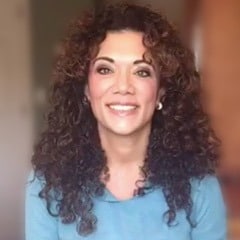
Seanlai is an author, professional speaker and the world’s leading authority on Proclivities: The Science of Connection. Human connection, or rather, human disconnection is the core of most thoughts, feelings and subconscious behavior. Her research topics cover a broad range of emotions and experiences including judgment, rejection, acceptance and self-‐love. Seanlai’s research in behavioral science and communication led her to the discovery that communication is a learned behavior and connection is an instinct.
I have with me a woman that I call a firecracker. She is a blast. When you start feeling her energy, you’re going to know exactly what I’m talking about. Seanlai is an author, professional speaker and she also happens to be the world’s leading authority on Proclivities, which is The Science of Connection. You’re going to love this woman. When she gets to talking, you see how she’s taking the world of science and entwining it into this movement and connectedness that we all know that we’re a part of in terms of evolution. She has this amazing background. Over twenty years of entrepreneurial experience, diversity awards, business awards, rising star awards, Forbes Magazine, you name it, she’s got the whole gamut here. What I think is most fabulous about her is really the work that she’s doing and what she’s committed to doing for people and how it’s changing lives. I can’t think of any bigger accolade to bestow upon somebody. Without further ado, welcome, Seanlai.
Thank you.
Thank you so much for joining us. I’m really excited to talk with you about your superpowers. What are they?
My superpower is I decoded the science of connection. I figured out that communication was a learned behavior and connection is an instinct. Communication is something that your mom taught you and your dad taught you. “Don’t stand too close to somebody. Don’t pick your nose in public. Don’t talk too loud. Don’t sit there.” All of those non-verbal, the tone of voice you use, the way that you speak, the order of your words, all of that is learned behavior. I have often felt that proclivities, I didn’t invent it. I was just given the gift of uncovering it. I felt like I was an archaeologist. Every time I thought that I had gotten in there and knew what I was doing, something else would emerge. I would be back down there with my little brush, just dusting off the artifact.

Proclivities: We forgot what we were naturally born here to do. We’re here to connect.
Nobody had to teach you how to play, Tonya. When you came into this world, nobody said, “Here’s what you do with blocks. Here’s how you get your mom’s attention.” You came in knowing. Like so many other things, it got domesticated out of you when people taught you how to communicate. We forgot what we were naturally born here to do. We’re here to connect. You see people shouting at each other. They’re communicating because they have common symbols and common language but there’s such a level of disconnection in the world. It drove me crazy. I wanted to solve the mystery of why do you do what you do? I wanted to connect with my husband. It was a very selfish reason in the beginning. It just exploded into this beautiful being that I get the privilege of getting to guide.
I love that you’re giving voice to the fact that we are very self-serving individuals. There’s a reason why we all do everything. What we find, especially in business and entrepreneurship, is most people seek the business pieces out because we’re trying to solve something for ourselves or expand upon it or understand it in a way.
It saved the marriage and then it was taken to the company. I know most people do it the other way. I had a choice. I love my husband. He’s my soul mate. My choices were I could bury him under the pool in the backyard. That I thought would take a lot of effort and probably some jail time. I could divorce him. I thought that would be also an expensive venture. I could live with him the way he was. That was not going to work, because that’s why we had choice one and two. Or I could solve the mystery. Why do you do what you do? Once I got on that trail. It was really this beautiful artifact that I get to uncover a little bit more every day.
I can hear it when you speak, I know you and I have connected before. Why the drive to put the pieces in place, in a very specific way. It’s like the whole science mindset. Where did all that come from?
I come from a family of scientists. I have a very famous scientific cousin, the one that everyone knows. My whole family is very scientifically-based. I didn’t know that I was doing anything special. I have a very dear friend, who ended up being one of my biggest mentors. He is a Wall Street whiz kid. He wrote the book on corporate strategy. His name is Robert Bradford. I joined the National Speakers Association because I was an award-winning speaker in college. It was that moment in life where you decide what you’re about. I was tired of being a CEO. It wasn’t my dream. It wasn’t what I wanted to do with the rest of my life.
I thought I was going to speak about belief systems. I think I was going to be a motivational speaker. I meet this guy who laughs at me essentially, because he works with CEOs all the time, and says to me, “Why do you want to talk about belief systems? Who cares what you think?” I said, “That’s because nobody knows what I believe.” I was serious. What he taught me was how to play in my brain, was how to take what I was doing so very naturally and codify it in a way that I could share it with the world. I really, truly thought all I had done was found a way to work with my husband and a way to work with the people that worked for me. I did not think I was doing anything special until he said to me, “I work with a lot of CEOs. Nobody does what you’re doing.”
That was the first time I even had a clue that anything I was doing was unique. Once I figured it out, it’s become this wonderful tool that I have used in so many areas of my life; from my relationship with my husband, to my work, to my son, to helping other people with their companies, with couples. Connection is what you do at home, at work, and everything in between. The vastness of the work is the only part of it that’s remarkably overwhelming because it really does fit everywhere because people are everywhere.
Talk to us about proclivities. What’s that all about?
I call it Proclivities: The Science of Connection. There are four proclivity types. I wanted to make it easy for everyone to understand, even third graders. It’s great because I got a letter from a seven-year-old girl the other day, which was really fantastic. The acronym is PLAY. There are four proclivity types: Players, Lighters, Artists and Y’ers. Your Player people, they’re very physical people. They’re very tangible people. They operate and function in their body. Everything they do is in the here and the now. They have the unique superpower of being able to stand in the here and the now, and work out all the possible potential problems and solutions of anything, which makes them really great. Except they tend to overthink and talk to themselves out of things. Like all superpowers, it can work against you.
The Lighter proclivity, they are very visual people. They can come across as very aloof and very cold because they process the world so fast visually that it takes them a minute to talk to you and to respond to you. Very often, these are the Angelina Jolies of the world, incredibly beautiful to look at, a little bit cold when you first meet her, because of that visual acuity is so fast in the processing. She needs a second to respond.
The Artist proclivity, they’re creative and discerning and messy. They’re all foodies. They process the world through what they hear and tone of voice and silence heard and sound are very, very important to them. They’re usually your musicians. They’re not really artistic in the traditional sense of drawing and painting, but they can be. Most of the time, they’re just really creative and very discerning.
Your Y’er proclivity are your people like me. We speak to connect. Our superpower is that we get to slide in and out of everyone else’s language pretty seamlessly. We have our own language that we work from. We like processes and systems. Very often, we can overwhelm people because we have so much to say and we interrupt. We don’t listen nearly as well as we think we do, but we sure do try. They all have a superpower, every one of them. It’s unique to them and they all have their own language, which is also unique to them.
I love that you gave voice to the idea that the superpowers also have a detriment. I always say that your greatest superpower start off usually as your greatest challenge, like Spiderman got bit by the spider. I love that you work that into it.

Proclivities: It’s a double-edged sword. When I think about the Y’er proclivity, I’m eloquent but I also talk too much and I interrupt.
It’s a double-edged sword. When I think about the Y’er proclivity for example, because that’s mine, it’s an easy place for me to play. I’m eloquent and I’m very verbal. It means I talk too much and it means I interrupt. Then, you’ve got your Artist proclivity. They’re very discerning. What that means is that they hear everything, even things that you wish they wouldn’t. Sometimes they overhear. Their foodie aspect comes from there’s a nerve in your ear called the chorda tympani nerve. It runs directly into your taste buds. Since they process the world through their ears, it’s very common. All artists are foodies, but not all foodies are artists. Because they process the world predominantly through their ears, food becomes a joyous experience for them. It can also be a double-edged sword because sometimes they struggle with their weight. Everything is a balance. Everything is a yin and yang.
Talk to me about your process of how this all came about?
I was trying to save my marriage. I was arguing with my husband all the time. He kept saying the same things. I thought, “What’s wrong with you?” That’s really what it was. There was a moment where he said to me, “You interrupted my fun.” It was just an argument. That was a moment of absolute divine intervention. Because rather than go in the typical argument space, I went, “Hold on just a second.” I couldn’t imagine what that meant. I said to him, “Is fun an emotion for you or as an activity?” He said, “It’s an emotion.” I went, “Really?”
That was the first moment that I figured out that we didn’t think the same. For me, fun is an activity. The by-product of the activity is fun. For the Player proclivity, 100% of the time they answer this, that fun is an emotion. Your listeners, I asked that question and some of them said, “It’s an emotion, duh?” The rest of us said, “No, it’s an activity. What is she talking about?” It’s very common when you have those moments. I really thought it was just him. I’m so grateful. I had 100 employees at the time. They were my first focus group. I studied them like ants in a petri dish. My world is, “If you’re hanging out with me, you’re part of the research.”
At this point, the assessment that I have online, I’ve had thousands and thousands of people take it. I have tons of people who have come to me and sat through interviews and focus groups and study after study, after study. I think my assessment is on its tenth version right now, just really refining it. The biggest part of what I do is I wanted to solve a problem. There are a lot of people out there who talk about their personality tests or this and that. I want to be clear. It’s not a personality test. It’s not a personality type. You were born this way. That’s the best part.
When my little boy, who was an Artist proclivity, when he was young, I gave him a pacifier. He would hum himself to sleep. The Artist proclivity is very connected to music and very connected to noise. They feel safest in noise, in chaos. Nobody had to teach him how to hum himself to sleep. It’s just how he showed up. That’s why I said I got a letter from a seven-year-old girl. She’s a Y’er. She had questions. She called me. I do a Facebook live every day at 3:00. Her mother watches my show and sent me a message and said, “My daughter has questions that I can’t answer.” I got on Skype with her. She’s seven and she said, “How come mommy does this and why that?” This kid is a total Y’er, million questions asked. You came in this way. You just have to remember who you are.
Do you work one-on-one with people or groups? How do you get this out there?
Yes. I work with companies, helping their teams connect better, helping them become more productive, more functioning to keep voluntary turnover down and increase sales. When I work with couples, very often it’s the couple. A lot of times, I do lots of coaching. I do live events. I have online workshops and courses that people can take because I know sometimes it’s inconvenient for them to fly to me or me to go to them, if money is an issue or whatever. They could take some online courses.
What’s next for Proclivities? What’s the evolution of this?
I’m so excited about it because we have just finished something that everyone has asked for, which is most of the time when people know their proclivity, I want it memorized because I want to know the problem I was solving. When you put out any type of work like this, everybody comes to a place, or at least I think this way, that everyone comes to a place of, “So what? I know my proclivity, so what? What does that mean? What does that do for me? Big deal.” I had to know what am I doing, what am I solving?
It’s tolerance and tools for conflict resolution. Remember where this started. I didn’t want to kill my husband. What’s really great about it is that now, one of the things that’s available on our website is you can go and put in your survey ID, once you take a proclivities assessment, and that of your partner or your kids or your business partner. It will generate a report for you that tells you where your connection misfires and your connection wins are. For me, that’s been a big labor of love to put all of that together for everyone, because there are 144 different combinations.
I said there are four proclivity types. When you show up in the world, you show up in the place that you play best. When you are stressed or when you fall in love, you go into what we call, Acting Crazy Time, which is your ACTclivity. It’s who you become when you are not you. It’s Dr. Jekyll and Mr. Hyde or Bruce Banner and The Incredible Hulk. It’s that other side of your personality that shows up and it’s a very real part of you. When that happens, you can’t think, your language patterns change and everything you thought you knew about you changes too.
My love work is with couples because 53% of couples in the United States divorce, and of the 53% of the divorced, 82% divorce between years three and five. In my mind, the reason that that is, is because those chemicals that cause you to stress or the chemicals that cause you to fall in love, they were off after two years. Couples get divorced in years three and five. Think about it. Our job is to help them stay together.
You should be built into the premarital counseling, be like, “At a round year three, here’s what’s going to happen.”

Proclivities: When you show up in the world, you show up in the place that you play best.
Let’s say they’re just newly-dating and they take it. They’re going to show up in their ACTclivity space, which is that Acting Crazy Time, but I’ll also have the results for their proclivity, because that’ll show up in an opposite number sequence. When that happens, at least we know what we’re dealing with now, we know both sides of the coin, so now they know what they can do when they play. One of the programs I’m working on, Relationship 911 that I’ve released, has a couple’s compatibility model. It’s a model where you plug in your data. How do we do? I can’t guarantee any couple’s going to stay together or not. I can tell you how your compatibility shows up when you came in, what you brought in after that, all that nurture stuff, you have to deal with it. Here’s your nature. Here’s where you started.
It feels like you’ve really settled into this space that you are extremely well. I so enjoy people who sit in their space and flesh it out and evolve it and grow it. I think it serves all of us from a big puzzle perspective, when we each perfect our piece. It really does create a cool tapestry of the image that comes forward. I, for one, honor the work that you’re doing in the world and appreciate what I’m sure you’ve had to evolve through to get to that place. Please let us know how we can support you. I know that our listeners are going to want to know more about you. Where would you like to send them?
They could always find me on Facebook. I have a very active group on Facebook, LYF with Seanlai, which means Love You First. That’s a platform I stand on. They can always head to my website which is Seanlai.biz.
Is there anything you want to share with our listeners before we lovingly release you out to your work in the world?
As I mentioned, my group is called LYF with Sean Lai, Love You First. You’re only here for a little bit of time. You have just such a small window to make an impact. Steve Jobs had a dent in the universe. If you’re sitting on the fence, when would now be a good time?
Thank you so much for sharing that. I so appreciate you coming and sharing a bit of yourself with us today.
Thanks for having me. I had a good time. Thank you.
To all of you out there, as always, we appreciate your loyalty. Until next time, go out, uncover your superpowers and change the world. Take care, everyone.
Podcast: Play in new window
